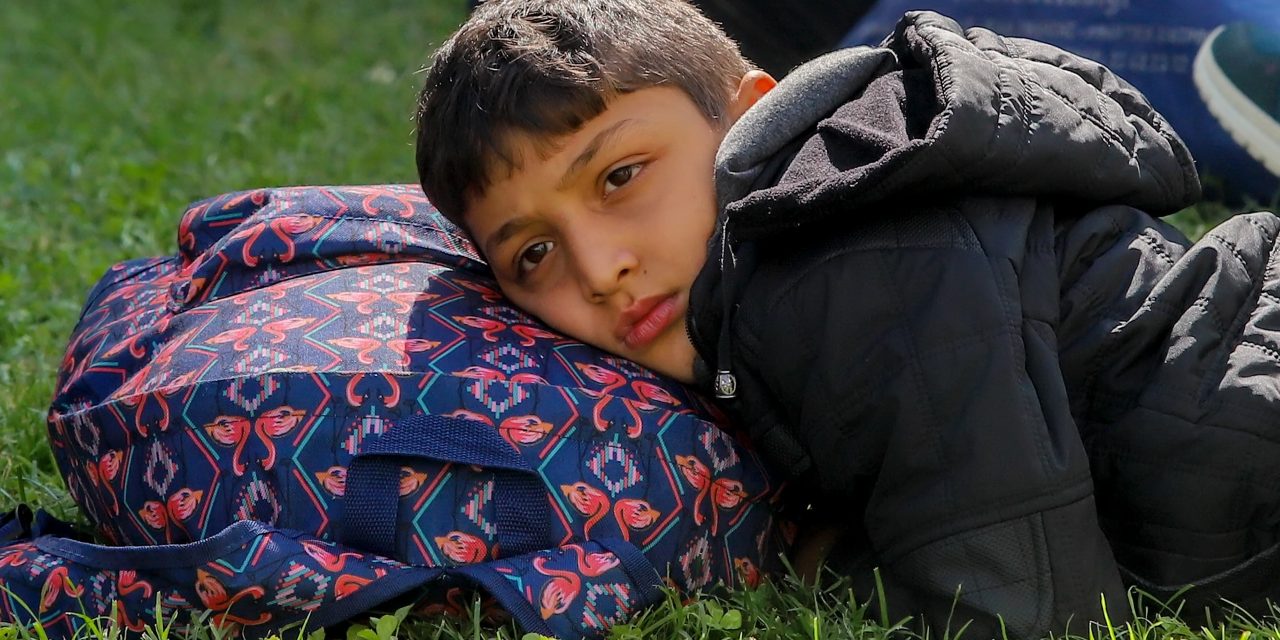For many people planning to seek asylum in the United States, enforcement starts in Panama, over 3,000 miles south of the U.S.-Mexico border. U.S. immigration agencies collaborate with Panama’s National Border Service, also known as SENAFRONT, to register and track people as they pass through Central America.
The United States provides Panama with equipment, training, and funding for immigration enforcement. This collaboration with Panama is just one of many ways that the United States pressures other governments to assist with its border security operations.
People Just Barely Survived Crossing a Jungle Known to Be Impassible
The Darien Gap, an approximately 60-mile stretch of dense jungle between Panama and Colombia, is notorious for its life-threatening terrain. Those who cross it face swift river currents, dangerous animals, and criminal organizations. It is the only break in the Pan-American highway between Alaska and the southern tip of Argentina.
Migrants who cross through it do so because they are unable to travel directly to the United States or Mexico. They instead enter countries in South America with fewer visa restrictions by plane or boat and then journey north. Almost all of them are Haitian, Cuban, or “extracontinental.”
In 2019, 24,000 migrants passed through the Darien region, including 4,000 children.
Conditions at the Panama Border
A camp run by SENAFRONT in Bajo Chiquito, Panama processes those traveling through Panama. SENAFRONT requires everyone at the camp to register before proceeding further north through Central America. Panama and at least 13 other countries use the United States’ Biometric Identification Transnational Migration Alert Program (BITMAP) to collect the fingerprints, photographs, and iris scans of migrants.
People cannot leave the camp until their background check has cleared. While some can proceed quickly, others must wait months.
Asylum seekers from Yemen and other countries defined as “special interest” by the United States must undergo additional vetting. Once they are cleared, buses take them through Panama directly to the Costa Rican border. These buses are limited to 100 passengers per day in a policy known as “Operation Controlled Flow.”
Panama has paused the bus service since the Costa Rican border closed due to the COVID-19 pandemic. Hundreds of people are now trapped in the migrant camps. In March, the Bajo Chiquito camp, which was built to hold 100 people, held 800.
Panama planned to open a new camp this year, but is currently using it to isolate migrants showing symptoms of COVID-19. Migrants at the camps have protested border closures and poor conditions, including lack of safe drinking water.
The U.S. Pressures Mexico and Central American Countries to Expel Asylum Seekers
The United States has provided Mexico with more than $100 million since 2014 for immigration enforcement. In 2018, Mexico agreed to deploy its National Guard and allow the United States to implement the so-called Migrant Protection Protocols, also referred to as “Remain in Mexico.” This occurred after the Trump administration threatened high tariffs on Mexican goods.
The United States cut off hundreds of millions of dollars of aid to the three Northern Triangle countries, Guatemala, Honduras, and El Salvador, in 2019. The aid wasn’t restored until each country had agreed to participate in Asylum Cooperative Agreements. These agreements allow the United States to divert asylum seekers to other countries, requiring them to apply for protection there instead.
But these countries have virtually no capacity to hear asylum claims.
As of 2019, Guatemala had only eight employees processing asylum applications, while El Salvador had one. The Northern Triangle countries are also home to the very types of violence and persecution that asylum seekers are fleeing.
Many of the migrants stalled or stopped by Central American and Mexican immigration enforcement are asylum seekers attempting to exercise their legal right to seek protection in the United States. The United States should not assist or incentivize other countries in preventing them from reaching our borders. Instead, it must work with other governments in the region to protect the rights of all migrants.


